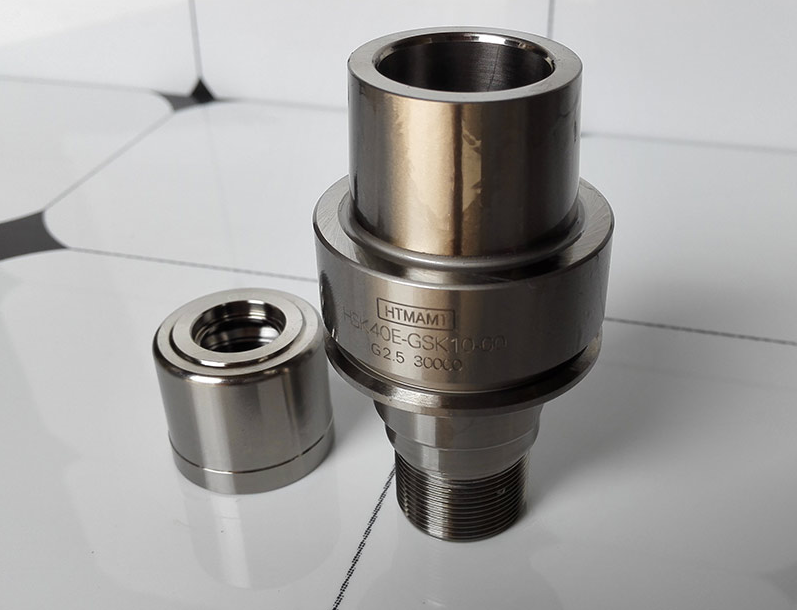Hsk Tool Holder is the Bing of high speed cutting tool. At present, hollow short taper shank (HSK) has become more and more popular in the field of cutting, because it has obvious advantages over 7:24 large taper shank in precision, rigidity, high applicable speed and convenient tool change. The publication of HSK's formal international standards will make it more widely recognized by all countries. However, in the application of this new type of TOOL HOLDER, due to its structural characteristics, it is also necessary to grasp the size of its carrying capacity and matters needing attention in use, in order to ensure safe and trouble-free work.

The bending moment on the tool handle is caused by the force acting transversely on the tool. The moment bearing capacity of the
Tool Holder is the moment value when the flange contact surface of the tool holder begins to separate under the action of bending moment. Starting from this critical moment value, the trend of the bending moment-deformation characteristic curve becomes steeper obviously, which indicates that the connection strength of the tool holder clamp decreases rapidly. When approaching the critical point, the connection strength is not enough. Although the flange face of the tool holder and the end face of the spindle are still in full contact at this time, the bending moment is close to the critical value of separating the two. The critical moment depends mainly on the tension force, so increasing the tension force can improve the maximum bending moment. This is of special significance to the tool with longer overhang, at which time a smaller cutting force will produce larger bending moment. However, increasing the tension force will increase the total load acting on the inclined surface of the tool holder, especially under high speed transmission. Because of the centrifugal force, the clamping force exerted by the internal gripper will increase accordingly, which will improve the reliability of clamping. On the other hand, it will make the thinnest part of the tool holder bear a great load, which will lead to the damage of the tool holder.
HSK Tool Holder must be able to withstand and transmit the cutting force and torque when milling under heavy load. In order to determine the bearing capacity of the maximum torque of the tool handle, static and dynamic load tests were carried out. During the test, the torque is gradually increased until the tool holder fails. The torsion-deformation curve of HSK63 tool holder made of different materials shows that under the action of load, the tool holder is in the stage of elastic deformation first, and then enters the loading stage of clamping. The curve is relatively flat, because there is friction between the tool holder and the contact surface of the spindle, forming a high torsional rigidity. After overcoming this friction torque, the rigidity decreases. Continuing to increase the load, the transmission key begins to bear the torque until the tool handle is damaged. It can be seen that the damage torque is closely related to the material. If the material can be selected correctly, the load-bearing capacity of the tool holder can be obviously improved. In order to determine the maximum torque bearing capacity of the tool holder, only static test is not enough. Under the continuous action of dynamic excitation generated in cutting process, the ability of the tool holder to withstand the torque decreases significantly. The table lists the ultimate torque bearing values of HSK63 tool shank made of different materials. As can be seen from the table, for all materials, the dynamic load-carrying capacity is only 7% of the static test.
Table HSK63 tool holder bearing capacity:
Clamping force of HSK-63 A-C tool holder: 15KN, 18KN, 21KN
Flange end separation moment: 420Nm, 460Nm, 510Nm
Sliding Torque: 115-155Nm, 138-186Nm, 161-218Nm
Static test failure torque: 2200Nm (16MnCr5, 56HRC), 2400Nm (41Cr4, 53HRC), 3300Nm (X46Cr13, 53HRC)
Dynamic test failure torque: 1600Nm (16MnCr5,56HRC), 1800Nm (41Cr4,53HRC), 2400Nm (X46Cr13,53HRC)
Maximum operating speed: 22500r/min (minimum interference fit), 27500r/min (maximum interference fit)
For the HSK tool holder with E-type structure (without keyway), the maximum torque transferable is realized by friction between the tool holder and the spindle. Its size depends not only on the difference of taper matching accuracy, but also on the tension force. The sliding torque of a HSK63 tool holder is 138-186 Nm under the 18 KN tension recommended by DIN standard. If the tension is increased to 21 KN, the sliding torque can be increased by about 20% to 161-218 Nm.
HSK NC tool holder (hollow short taper tool holder) is a rotary tool clamping device widely used in high-speed cutting machine tools, which plays the role of connecting the spindle of NC machine tools and cutting tools and transferring torque. The International Organization for Standardization (ISO) has formulated the standard of HSK NC tool holder in 2001. HSK NC tool holder is considered to be one of the most suitable tool holder forms for high speed cutting.

![]() February 21, 2019
February 21, 2019

